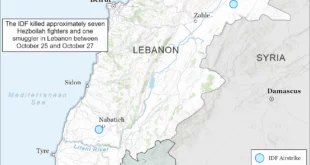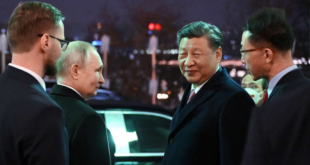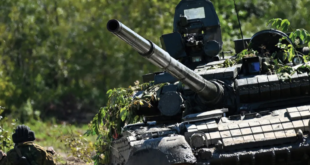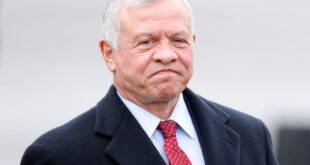The killing of Fakhrizadeh is major news globally. As such it is a huge embarrassment for Iran.
The killing of Mohsen Fakhrizadeh in Iran, a key nuclear engineer behind Iran’s clandestine nuclear program, was not just a hit, it was a bloody and symbolic killing. According to the photos posted online he wasn’t just killed, one of the cars in his entourage was eviscerated and the other peppered with bullet holes.
This was a hit like the killing of Gambino crime boss Paul Castellano in New York in 1985, a serious assassination that shows the power of those responsible and shows that any Iranian linked to the nuclear program can be found and killed.
He was shot down on a road in broad daylight. This was not a clandestine hit, but a brutal clear killing – the destruction of a major and well-known Iranian figure. He was not as well known as Iran’s foreign minister, Javad Zarif, not a glad-hander who sucks up to Western politicians and is known for nice suits and “moderation,” but a man well-known in intelligence circles, among the kinds of people who follow Iran closely. They say he was not a “household name.”
But in the households where people know about Iran’s nuclear efforts, ostensibly on hold since the Iran nuclear deal in 2015, he was known. Iran has been increasing its advanced centrifuges in the last years and enriching uranium. One key nuclear site, Natanz, was impacted by sabotage in July.
What we know is that this man was a high up in the IRGC, Iran’s key military and ideological unit. “Even as a scientist he reportedly retained a senior rank in the IRGC as a brigadier general,” notes The Guardian.
He was spotlighted in 2011 by an Iranian nuclear watchdog. He was named again in 2018 by Israel. He was at the pinnacle of the Islamic Republic’s nuclear weapons program. His death is considered to have a major impact on Iran. This is more than the killings of other scientists, such as one killed by an assassin on a motorbike in 2010 or by a car bomb in 2012.
Iran’s regime is also embarrassed. It comes the same month that al-Qaeda’s second-in-command was gunned down in Tehran. Tehran can’t keep safe al-Qaeda terrorists it harbors or its own head scientists and generals. No one is safe in Iran’s Iran.
The killing of Fakhrizadeh is major news globally. As such it is a huge embarrassment for Iran. On social media some compared it to the killing of IRGC Quds Force head Qasem Soleimani. These are two key men, one key to the expeditionary force of Iran, in places like Iraq and Syria, while the other was key to the internal Iranian nuclear program, which is a point of pride for Iran.
The killing comes days after Iran’s IRGC lost fighters in airstrikes in Syria. This means Iran is under pressure from multiple setbacks. It illustrates how vulnerable the Islamic Republic is despite Iran’s claims that it is a strong power in the region.
On the one hand Iran seeks hegemonic power – controlling or blackmailing Iraq, Yemen, Syria and Lebanon through militias and influence. It has strong power among proxy forces, built up since the 1980s. But on the streets of Tehran, or the road to Absard – east of Tehran – the IRGC has been shown to be vulnerable.
Despite Iran’s new advances in drones and radar, when it comes to old style assassinations, like the ones of the 1980s, it seems Iran cannot protect its own at the highest levels.
 Eurasia Press & News
Eurasia Press & News



